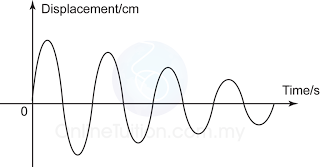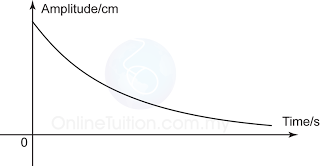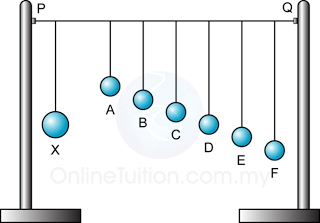Natural Frequency
The Natural frequency of an oscillating system is the frequency of the system when there is no external force or forces acting on it.Damping
- Damping is the decrease of amplitude of an oscillating system.
- An oscillating system experiences damping when its energy is losing to the surrounding as heat energy.
- Usually, the frequency of the system remain unchanged.
 |
| (Displacement-time graph of a damped oscillation) |
 |
| (Amplitude-time graph of a damped oscillation) |
Type of Damping
Damping can be divided into:- internal damping, where an oscillating system loses energy due to the extension and compression of the molecules in the system.
- external damping, where an oscillating system loses energy to overcome frictional force or air resistance that act on it.
Force Oscillation
- In a damped oscillation, external force must be applied to the system to enable the oscillation to go on continuously.
- Oscillation with the help of external force or forces is called a force oscillation.
Resonance
In a force oscillation, if the frequency of the external force is equal to the natural frequency of the system, the system will oscillates with maximum amplitude, and this is named as resonance.Examples of Resonance
- Opera singer breaks a wine glass with her voice due to the effect of resonance.
- Tacoma Narrow Bridge in USA collapsed in 1940 due to the effect of resonance.
- A moving bus produces excessive noise at certain speed when the frequency of the engine equal to the natural frequency of the bus.

Bartons Pendulum
The characteristic of resonance can be demonstrated with a Barton’s pendulum system.
Observation:
1. When pendulum X oscillates, the other pendulums are forced to oscillate.
2. Pendulum D will oscillates with the largest amplitude.